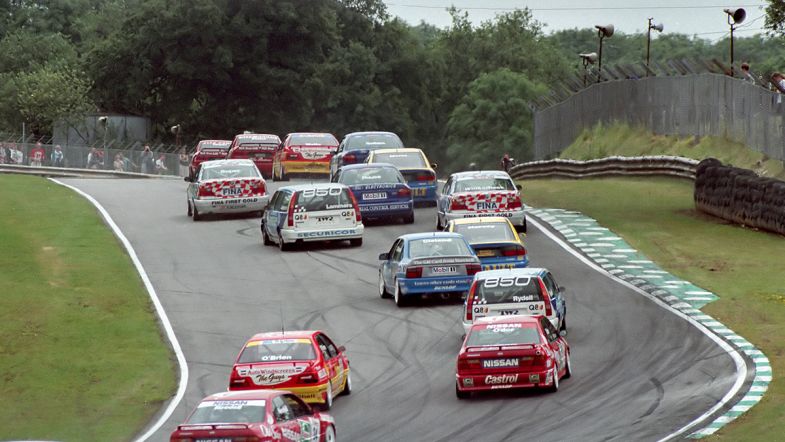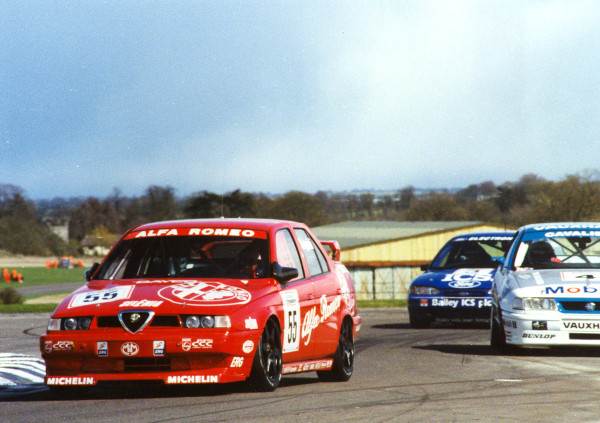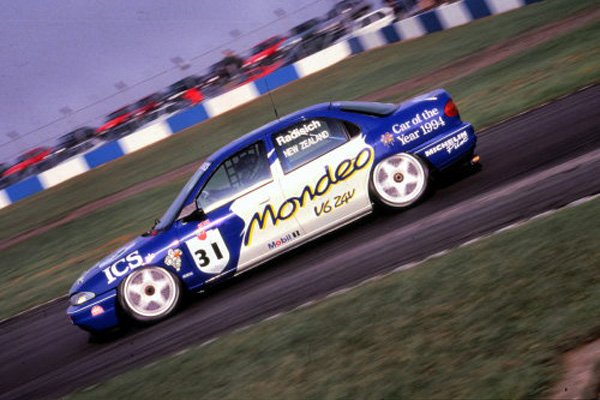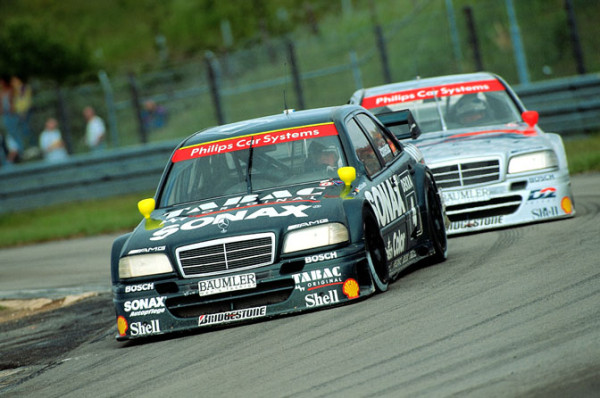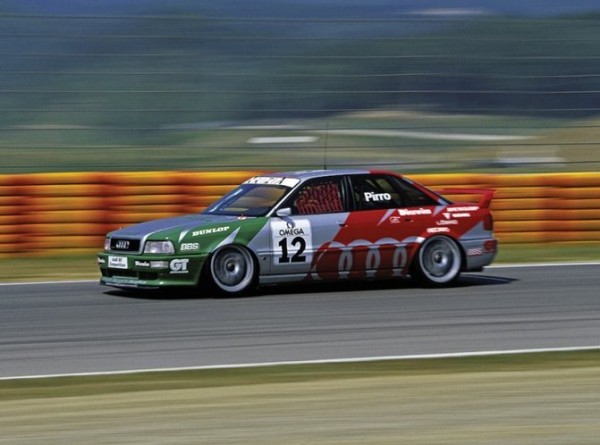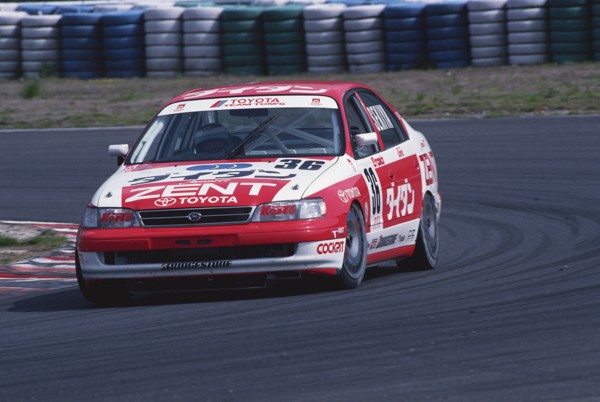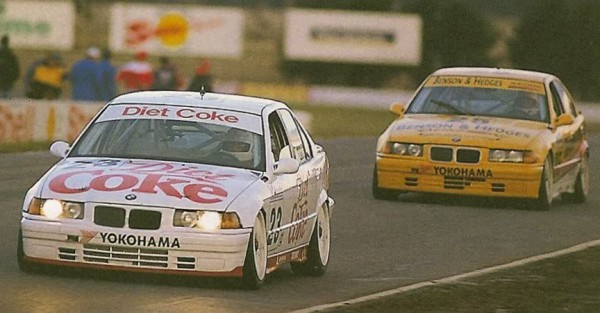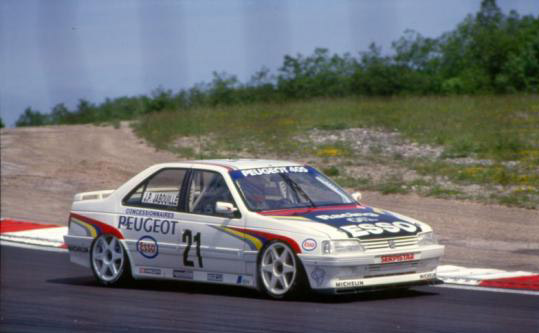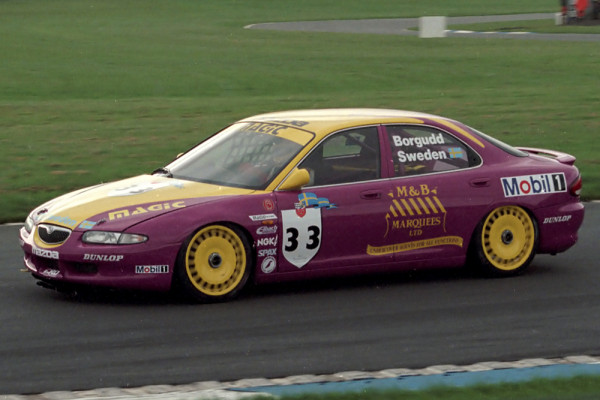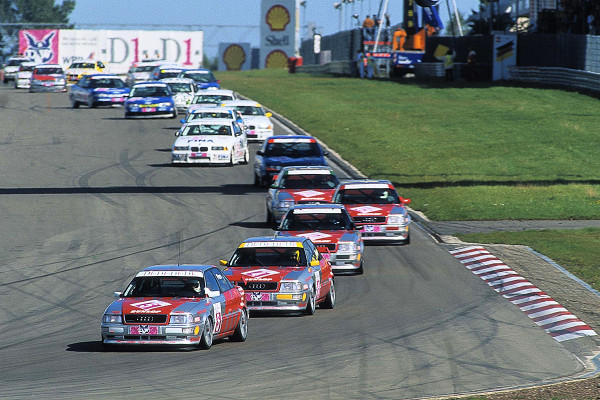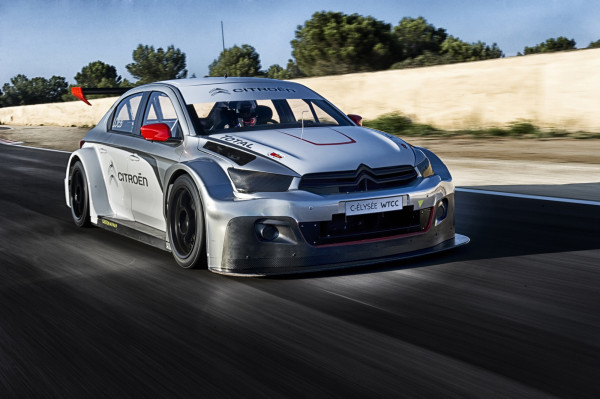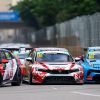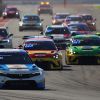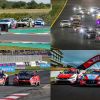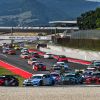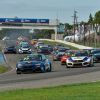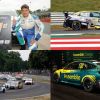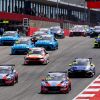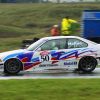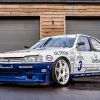The touring car racing scene 20 years ago
Join us for a look back at the racing scene 20 years ago: 1994. This was a time when the Super Touring regulations were on a strong rise, with many new championships being formed and grid numbers rising quickly.
We start with the British Touring Car Championship, the very birthplace of Super Touring, or FIA Class II as it was called until 1995, when the front splitter and rear wing were introduced.
The introduction of the wings happened due to controversies which arose during the 1994 BTCC season. BMW’s Joachim Winkelhock was defending champion after beating main title rivals Steve Soper, Paul Radisich and John Cleland in 1993.
But Winkelhock was only to finish sixth in 1994, despite scoring four victories. Instead it was Alfa Romeo and Gabriele Tarquini that was to star in the Championship. The Italian started in style by winning the first five races.
Controversy was quickly followed as several teams filed protests against Alfa Romeo for running with front and rear spoilers on the Alfa Romeo 155 which were extended on the touring car, despite the road car variants being sold to customers with them retracted. Tension ran high in the fifth race weekend at Oulton Park when Alfa Romeo were told to run with the spoilers retracted, resulting in the Italian manufacturer leaving the race in protest.
Alfa Romeo and Tarquini were back at the next round with the spoilers retracted, a change they had to run for the remainder of the season, and still managed to win the title in dominating fashion, 76 points ahead of Renault’s Alain Menu and 92 points ahead of Ford’s Paul Radisich.
The controversy meant a change in regulations for 1995 when all cars had a common front splitter and rear wing.
1994 was the second and penultimate year of the one-event FIA Touring Car World Cup. This year saw the event held at Donington Park in the United Kingdom. The field was, just as the year before, massive with 40 cars on the grid from Alfa Romeo, BMW, Ford, Renault, Vauxhall, Volvo and many more.
The favourite for the race was New Zealand and Ford’s Paul Radisich, who lived up to expectations to claim his second straight FIA Touring Car World Cup title.
The massive grid created chaos in the first corner which saw several drivers being eliminated and the race being red-flagged. The race was restarted with Radisich quickly creating a big gap and crossed the line first, despite pressure from a hard-charging Steve Soper towards the end of the race.
The race included big names such as Alain Menu, Frank Biela, Hans-Joachin Stuck, Yvan Muller, John Cleland and Roberto Ravaglia.
1994 marked a split in the German touring car racing scene with two touring car championships: DTM and STW.
The Class I regulations in DTM (Deutsche Tourenwagen Meisterschaft) were changing to feature faster and more expensive cars. Alfa Romeo, Mercedes and Opel took part in the 1994 DTM season, with Klaus Ludwig claiming the title for AMG Mercedes ahead of Zakspeed Mercedes driver Jörg van Ommen and Alfa Romeo driver Nicola Larini in third.
Audi and BMW had left DTM after the 1992 season and joined the new ADAC Super Tourenwagen Cup in 1994. STW attracted a big field of 33 drivers in its first season with Super Touring cars from Audi, BMW, Ford, Nissan and the odd entries with cars from Opel, Toyota and Mitsubishi.
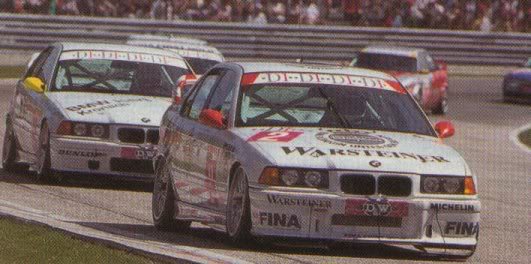
Venezuelan Johnny Cecotto won the title in a BMW 318i ahead of Audi team-mates Frank Biela and Emanuele Pirro, both driving Audi 80 Quattros.
1994 was the first year of the STW Cup, which took over as the main touring car championship in Germany as DTM became the ITC (International Touring Car Championship) in 1996, a championship only lasting for a single season. DTM was not to return until 2000, a year after the STW Cup closed its doors.
Italy was in its second year with Super Touring regulations in the 1994 Campionato Italiano Superturismo. Audi started their four-wheel drive might this season, although not with the A4 model, which was about to start rare success story a year later around the world, but with the 80 model. Emanuele Pirro, who also took part in the German championship this year, claimed the title, a feat he was to repeat a year later.
The Japanese Touring Car Championship had its first year of Super Touring regulations in 1994 and attracted a mighty field of 44 drivers and cars in total, while not all drivers completed a full season.
The season came to a close and spectacular end with Japanese Toyota driver Masanori Sekiya clinching the title ahead of future Le Mans ace Tom Kristensen, driving a Toyota Corona, and BMW legend Steve Soper. A single point separated Sekiya and Kristensen, with Soper just two points further adrift.
The season saw other big touring car names take part including Anthony Reid, Joachim Winkelhock and Tim Harvey.
Australia had, just as in Germany, two rival touring car championships in 1994 with the V8 powered Australian Touring Car Championship (ATCC), which later turned in to today’s V8 Supercars, and the two-litre series, the Australian Super Touring Championship (ASTC).
The ATCC had a five-litre formula, created in 1993, with Holden and Ford as the sole manufacturers and a field of 17 drivers in 1994. Australian racing legend Mark Skaife claimed the title in style, a full 57 points ahead of Glenn Seton and a further six points ahead of Peter Brock.
1994 was the first year for the Super Touring cars to run in a separate championship, ASTC, after running together with the ATCC in 1993. ASTC had, compared to its European counterparts, a small field of 15 drivers. Tony Longhurst claimed the title, driving a BMW 318i to six victories, ahead of team-mates Paul Morris in second and John Blanchard in third.
The French Super Touring Championship, or Championnat de France de Supertourisme, had its roots from the mid-1970s and saw the introduction of two-litre regulations in 1991. Three years later in 1994, local manufacturer Peugeot claimed the title. Behind the wheel was none other than Laurent Aiello, driving his Peugeot 405 Mi16 to the drivers’ title, a French driver with a bright touring car future ahead of him.
The Super Touring craze had not reached Scandinavia in 1994. The Swedish Touring Car Championship was still two years away and the transition period from Group A to Super Touring was slow.
The sole championship organised in this region in 1994 was the Nordic Touring Car Championship, which only attracted eight entries. The champion was Slim Borgudd, driving a Mazda Xedos 6, beating BMW driver Thomas Johansson by a mere three points. The championship only managed to gather a handful entries the following year and was closed down, followed by the successful STCC in 1996.
Others
1994 saw another six countries hosting Super Touring championships, including New Zealand, Spain and South Africa.
1994 gave a clear indication of what was to come of the Super Touring regulations with quickly growing championships all around the globe. Many manufacturers committed to the, still, cost effective regulations compared to the complicated and expensive Group A and Class I regulations.
This was also the last year of the wingless cars. While some argue the racing was better without the wings, less aerodynamics providing closer racing, gaps in the regulations meant that some cars to a certain degree, especially Alfa Romeo, still could take advantage of various forms of aerodynamic aids.
How does 1994 compare to 2014? Time will tell, but on paper it is far from the same. A lot of championships are gone or are drastically reduced in size. The main difference is the lack of common regulations around the world. Britain has got NGTC, Sweden Solution-F, Australia has its New Generation V8 Supercar, Germany its DTM rules, while the FIA standard is Super 2000, used in the WTCC and ETCC.
There are of course interesting things to come in 2014: new WTCC regulations, the evolving V8 Supercars and the strong DTM. Where will the touring car racing scene be in another 20 years?
